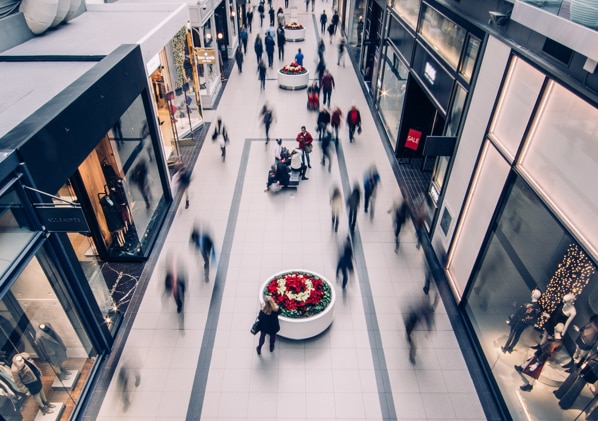Article
6 Ways to Manage the New Normal in Retail

When the coronavirus outbreak first hit Australia a few months ago, no one knew how long the world would be impacted. Now, it’s becoming clear that this new way of life will continue into the long-term future. That’s why when it comes to creating an effective strategy in the current climate, retailers need to look beyond just the next month or so.
“A vaccine could be 12-24 months away, so whatever retailers do today, they need that timeframe in mind. It is not a case of doing something for just two weeks. That’s what’s sinking into everybody’s minds. We need to do longer-term planning. Those who plan and implement well, will overtake the competition,” advises Daren Ng, General Manager of Asia-Pacific at Sensormatic. “I think the ability to understand on-the-ground specific details of the changing landscape is crucial. If you are able to get data from the shopfloor all the way to your store and customer locations, then retailers will make much better decisions, as opposed to using generalised data.”
To better manage in the new normal, here are six ways that can help retailers thrive today and into the future.
- Offer a seamless omni-channel experience
Even before the pandemic, smart retailers realised omni-channel was the way of the future. In the current environment, customers are on varying points of the spectrum when it comes to how they now prefer to shop.
Some people look forward to happily browsing in their favourite shops again. Others want to quickly visit a store for necessities, while some are just not comfortable going to shops at all at this point in time. For many retailers, kerbside shopping, click-and-collect and zero- or low-touch shopping are all part of the new normal.
In the past, retailers would say, ‘when I have more budget, when I get inventory to a certain level [we’ll go omnichannel]’…but by then, it’s too late,” says Ng.
- Stay on top of your inventory
To offer the ideal omni-channel experience, retailers need to accurately and successfully manage their inventory.
“Being on top of your inventory means you need to have a heightened level of visibility across all your stores and warehouses so you know your item levels. Can you take that particular online order? Can you fulfil it to this customer living in North Sydney?” advises Ng.
“You need to know your inventory at each store that is available for pick-up. You need to understand when it goes beyond a certain quantity, so you can top it up from another location. These are things that aren’t just relevant, but almost crucial in surviving the current situation.”
- Monitor your foot traffic
In addition to new shopper behaviour, foot traffic is also changing. Now that stores now must comply with different occupancy levels to meet social distancing guidelines, all previous foot traffic data no longer applies. Collecting accurate real-time data is paramount for a retailer to thrive in the new normal shopping environment.
“Foot traffic has changed significantly and without access to the data necessary to understand how it has changed, retailers will be unable to make informed decisions,” says Ng.
- Offer a new in-store shopping experience
Today fewer customers are able to enter brick-and-mortar stores due to health regulations. But instead of letting less traffic affect the shopping experience, retailers can maximise this opportunity by creating more personalised in-store customer experiences, especially for stores that offer in-store appointments.
“Monitor a customer’s preferences, purchase history and from there, you can recommend items that the customer may be interested in. This is not rocket science,” says Ng. “When you put something in your shopping cart on Amazon, five other items will be recommended to you. This is actually not a new innovation. We’ve seen it before. The trick is to bring it all the way to the store level.”
- Keep staff and customers safe
Ensuring the safety of customers is paramount and it all starts with taking care of your own teams’ health. Some ways to do this include offering hands-free hand sanitiser stations, implementing temperature checks, encouraging social distancing and using face shields or acrylic counter guards.
“We have to ensure that in order for customers to feel safe in our stores and interact with us, that employees are first and foremost healthy and safe,” explains Ng. “If you’re on a plane and there’s an emergency, you have to put your mask on first before helping someone else.”
- Communicate clearly with your customers
In today’s digital world, it’s not enough to simply print out a piece of paper with your new opening hours and stick it in your window. Retailers must be on top of informing customers of changing restrictions as quickly and effectively as possible. Some ways to communicate this includes keeping store hours updated online, verifying shopping hours on social media, and using attractive in-store signage and TV monitors.
“A store with no signage or comms would be seen in a significantly less attractive light than one that is clearly on top of it all. It puts customers at ease when these measures are taken and communication is clear,” says Ng.
Learn more about how Sensormatic Solutions’ Covid-19 toolkit can help you succeed in the new normal here.
Explore related topics

Ready to see how Sensormatic Solutions can transform your bottom line?
Contact UsStay one step ahead with our articles, insights and latest news.
See more

Sensormatic News Desk

